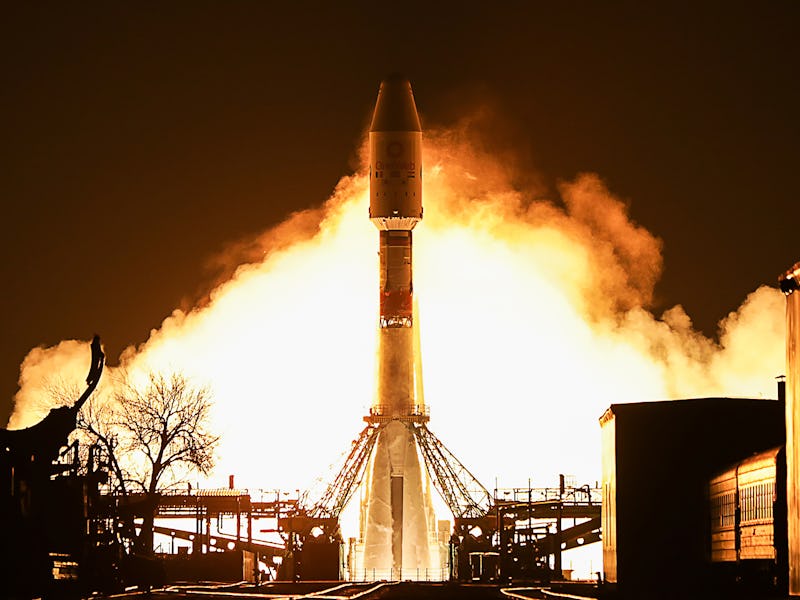SpaceX and others set a staggering spaceflight record in 2021
NASA, SpaceX, the Chinese government, and others helped make it a bumper year for space.

Space is opening up as humanity sets a new annual record for rocket launches — and there could be a lot more still to come.
On Monday, Ars Technica reported 144 launch attempts in 2021, of which 133 were a success. That beats both the record set for attempts in 1967 (139 attempts and 122 successes) and the record for successes set in 1976 (131 attempts and 125 successes).
It’s an impressive feat fueled by the rise of private companies like SpaceX and an increasing number of launches from China. Elon Musk’s spaceflight firm successfully launched all 31 scheduled Falcon 9 flights in 2021, its biggest year ever.
But while it would seem like Musk has something worth celebrating, on Tuesday he wrote on Twitter that there was something else worth measuring:
“Tonnage to orbit is the more fundamental metric”
Ars Technica also noted that China (including the government and private spaceflight firms) hosted 56 attempts with 53 successes, a marked increase from the 2000s when it launched just a handful of rockets per year. The publication sourced its data from the Center for Strategic and International Studies, Space Launch Report, and Gunter’s Space Page.
Humanity could end up beating that record next year. Inverse analysis suggests that SpaceX alone could launch over 36 rockets in 2022.
Want to find out more about how SpaceX and others are transforming spaceflight? Subscribe to MUSK READS+ for exclusive interviews and analysis about spaceflight, electric cars, and more.
What does Elon Musk mean by ‘tonnage to orbit’?
Although SpaceX aims to open up access to space, Musk claimed on Twitter that “tonnage to orbit” was a better metric to use.
Data from the European Space Agency’s Annual Space Environment report, shared by Twitter user Super_Grover in response to Musk’s post, shows that launch tons to low-Earth orbit increased dramatically in 2020. But while humanity launched over 400 tons to low-Earth orbit in 2020, that’s around half of the record set in 1992:
The European Space Agency's data on low-Earth orbit launches.
As the graph above shows, the Falcon 9 has spurred this recent jump in tonnage to low-Earth orbit. The rocket can send 50,265 pounds to low-Earth orbit, which means last year’s 31 launches could have launched a maximum of 1.5 million pounds.
The Starship, SpaceX’s fully-reusable rocket currently under development, could dramatically increase this figure. That rocket is expected to launch over 220,000 pounds to low-Earth orbit per flight. If the ship can achieve Musk’s goal of 1,000 flights per year, that would mean a single ship could launch 220 million pounds to orbit per year.
Of course, those are best-case scenario figures. Musk also wanted to launch the same Falcon 9 booster within 24 hours, but at the time of writing, the fastest turnaround record is 27 days.
The Inverse analysis — Humanity’s record-setting year shows how commercial spaceflight has helped reinvigorate the sector.
The commercially-driven approach also highlights how the future of space looks to be increasingly commercialized. Small satellite launches like Rocket Lab aim to fly satellites to their customers’ terms, unlike SpaceX that asks customers to join up on rideshare missions. SpaceX is launching its own satellite internet service, fueled by rapid Falcon 9 launches.
Beyond satellite launches, Blue Origin and Axiom Space have outlined plans for commercial space stations. These could act as alternatives to the existing International Space Station. NASA has extended the station’s existing operations through 2030, but beyond that, its future is uncertain.
For the Starship, Musk plans to use its launch capabilities to build a city on Mars. As Musk estimates it would require around a million tons of cargo, his biggest reason for focusing on tonnage to orbit is likely so he can achieve his goal of building the city by 2050.
SUBSCRIBE TO MUSK READS+, A PREMIUM NEWSLETTER THAT COVERS THE WORLDS OF ELON MUSK, SPACEX, TESLA, AND EVERYTHING BETWEEN.
This article was originally published on